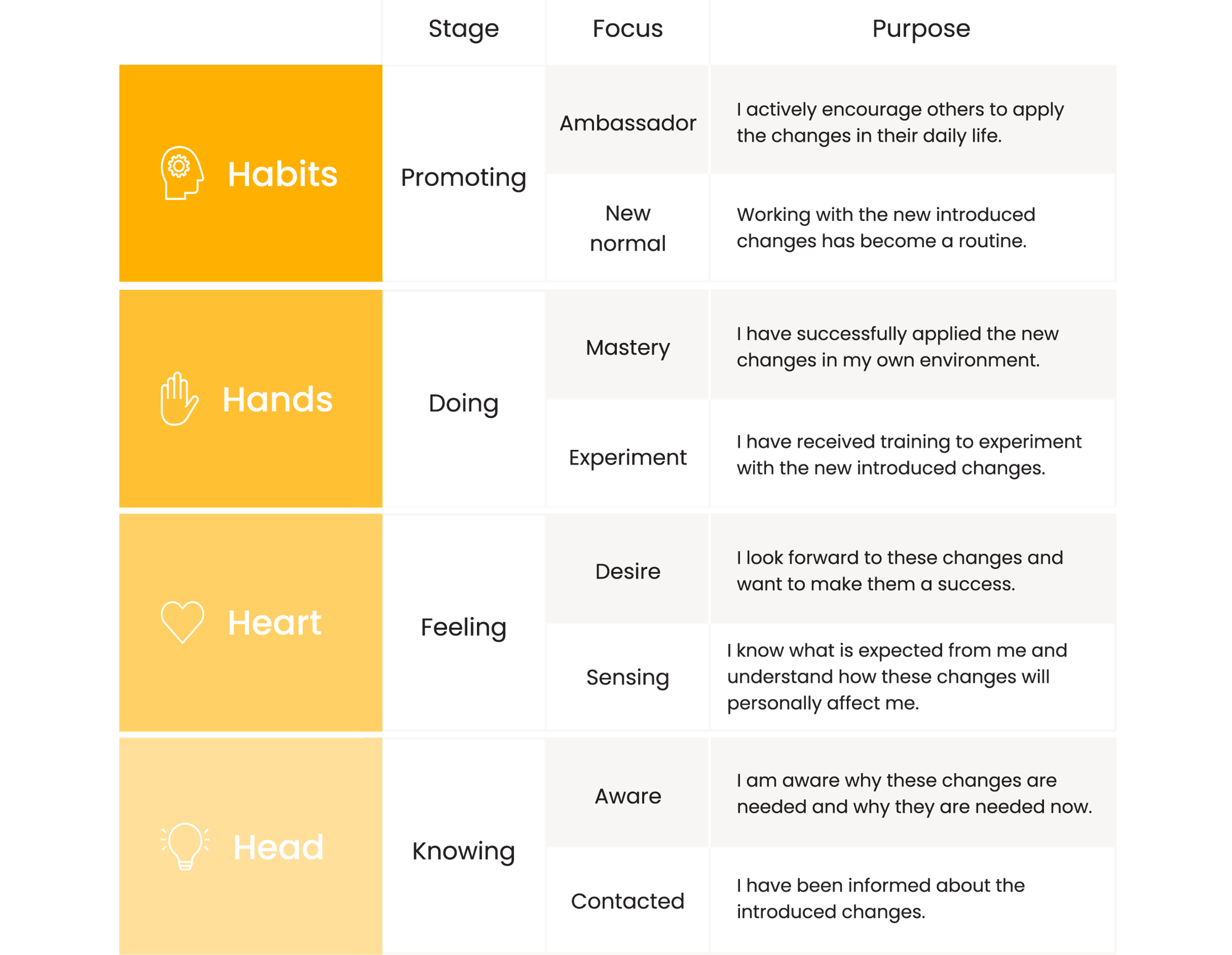In this blog, we start with the first stage of the commitment ladder:
Knowing
Are your employees informed of the changes that are going to take place? More importantly, are they aware of why the current situation must change?
The importance of information
Being contacted is the first encounter employees have with a change initiative that may require them to shift their mindset and/or behavior. Thus the first focal point in a change process is clearly informing people that a specific change will take place. Therefor, you need to keep some communication pitfalls in mind; contacting your team or your entire organisation is not straightforward. What message do you want to convey? Who do you want to reach? How will you align the message to your target audience? Who’s the right person to bring out the message?
A communication plan is a useful tool in this process. It will enable you to spell out how you want to communicate the change in concrete terms. When informing your employees, use the following steps:
1 – Determine who you should inform of the change first
Should you direct the message to the whole organisation, specific teams or a few people? By answering this question, you can determine who will receive the message first. However, involve other team members as well. If the project manager is the only person responsible for communications, he or she will soon be overloaded.
2 – Determine the type of message
Ensure consistent communication across the various channels. You can adapt the message based on the recipient. Also make the change tangible by visualizing it using flowcharts or other brainstorming tools.
3 – Communicate the message through the right channels
Use various channels and look for the ideal mix between face-to-face communication and briefings, e-mails, bulletin boards, … Ensure adequate interaction when conveying the message so that it does not become a one-sided story.
4 – Press ‘repeat’
Although people consider repetition a given, it is often forgotten. Some tips to make sure the message gets across? Split complicated or extensive messages into smaller segments or ask participants to summarise the message. This way you can test if they have received and understood the message properly.
Making employees aware of the WHY
People will only change once they have really understood why something ‘must’ change. If your story is not convincing it will certainly create problems during the transformation process itself:
- The change will not be prioritised.
- There will be resistance to free up additional material and human resources.
- There will be growing resistance to the new direction the company wants to move towards.
The purpose of a good story for change is that people demonstrate empathy for the desired situation, even without there being a crisis. Furthermore, they will be more inclined to distance themselves from the current situation and they will be triggered to really invest time in the transformation. An inspiring ambition or vision is important to convince people in their hearts and minds. A good story must appeal to reason as well as feelings.
When you develop your transformation story, start with the ‘why’, then progress to ‘how’, ‘what’ and ‘who’. Try to grab people’s attention and to encourage enthusiasm. Make your case stronger by using convincing arguments and finally, make it specific.
Awareness is established successfully when employees understand why changes are needed and why they are needed now.





